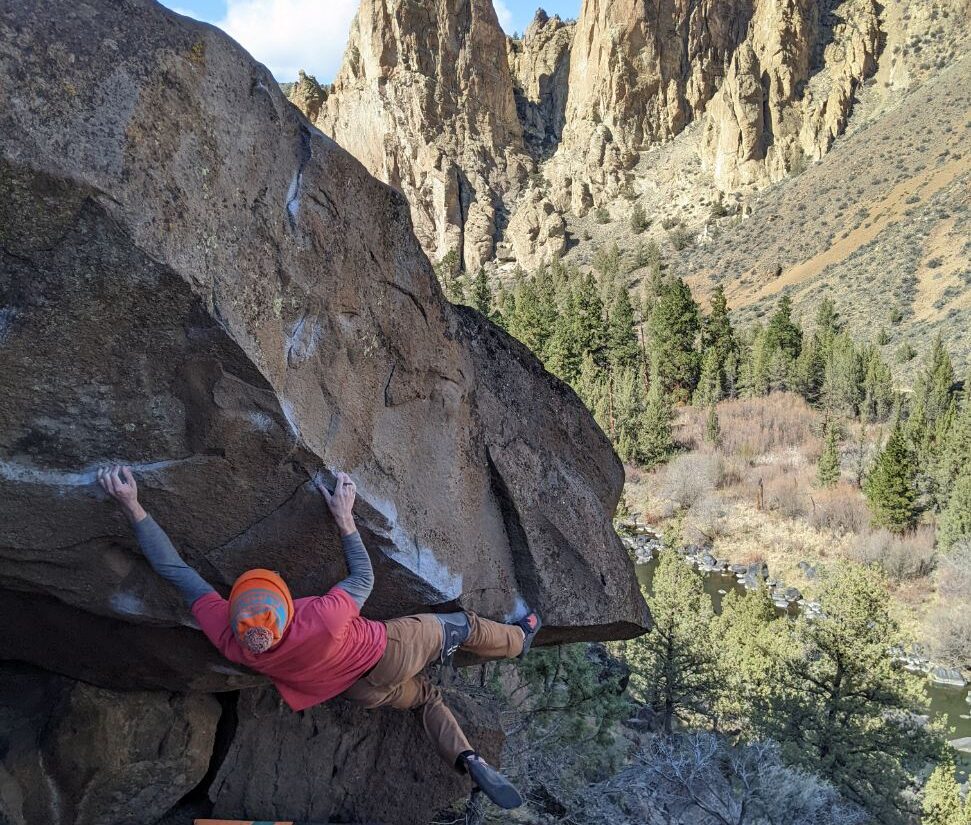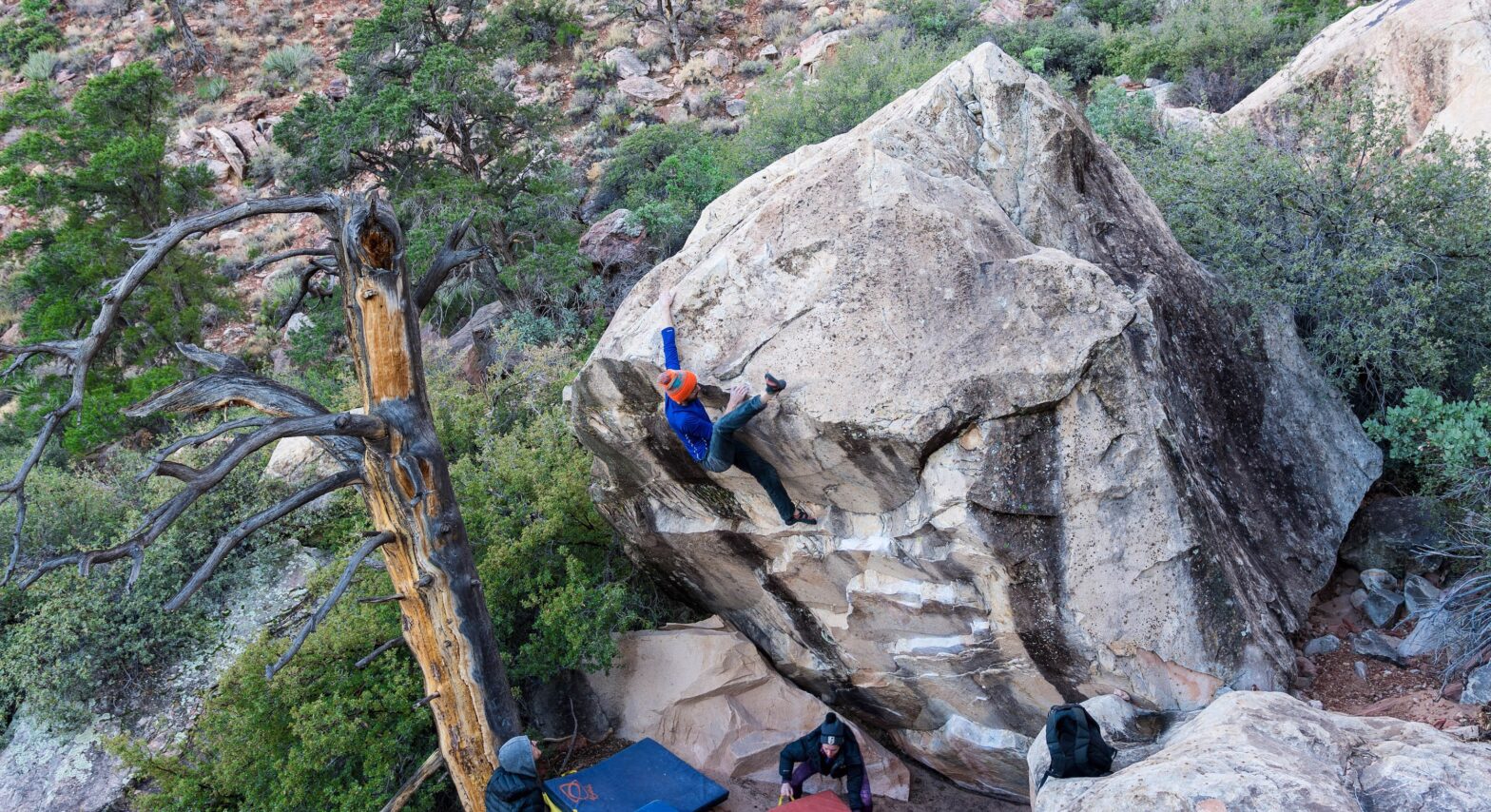“Overtraining” is a phrase thrown around vaguely in the climbing world, just like “training.” It reminds me a bit of that scene in This is the End, where anything that’s bad falls under the umbrella of gluten. Can’t easily crank out a one-arm after two sessions of weighted pull-ups? Feeling overtrained. Didn’t send your projContinue reading “Overtraining in climbers: what it is, how to spot it, and how to deal with it”
Category Archives: Uncategorized
Finger strength testing philosophy & update from 4 months of training
Athlete testing for rock climbing is still a brand new, evolving concept. I’ve spent the last few months testing myself and my 1-on-1 clients and putting together data sets. This is a short list of key points to consider when embarking on a testing regimen. What is testing good for? Testing is good for someContinue reading “Finger strength testing philosophy & update from 4 months of training”
Cueing yourself for climbing skill & power
Even a simple climbing movement is wildly complicated in biomechanical terms. Every time we grab a handhold or shift our balance, we’re automating a bunch of tasks. This gets easier as we do more and more of the same basic moves. As movements get more complex and unique, less of the task is automated, andContinue reading “Cueing yourself for climbing skill & power”
Climbing tactics 101: What tactics are, and why they matter
Have you ever spent the entire drive home from the crag beating your head against the steering wheel, because you know if you had just done something a little differently that you would have been able to send? Maybe you were tired, because you didn’t bring enough food. Maybe you messed up your skin, andContinue reading “Climbing tactics 101: What tactics are, and why they matter”
A self-coached climber’s guide: Questions to ask yourself before you start a new training plan
One of the most frequent questions asked on climbing forums around the internet is some form of “hey, I need feedback on my training plan.” Usually, these climbers are self-coached. The plans run the gamut from “meticulously collected from respectable, vital training books” to “do every drill I could find on the internet every dayContinue reading “A self-coached climber’s guide: Questions to ask yourself before you start a new training plan”
Climbing confidently: developing a habit of sending
Why do some people seem to pull a send out of the bag when they haven’t done moves, or even looked close to doing them? Why can some climbers travel to far-flung areas and consistently climb at a high level, while some others are only able to turn in good performances at their local haunt?Continue reading “Climbing confidently: developing a habit of sending”
Managing arousal levels, and matching arousal to imposed demand
Climbing makes many different demands of us. We need to be able to speed ourselves up, then slow ourselves down. Try extra hard, then be incredibly gentle. Focus on what we’re doing in this section, but also notice footholds for the next section, and sometimes go fully out-of-body to circumvent pain and fear. This setContinue reading “Managing arousal levels, and matching arousal to imposed demand”
Bouldering 101: How to place crash pads and not break your legs
I’ve had the unfortunate experience of witnessing many bouldering injuries. These range from nauseatingly audible pulley pops to countless ankle sprains to seeing someone break her back falling off an icy boulder in Wyoming. My least favorite memories are the accidents or near-accidents that were clearly avoidable. Usually those went something like this: some folksContinue reading “Bouldering 101: How to place crash pads and not break your legs”
Mental Maps for Climbing: The information processing loop and strategies for sequencing
In the first part of this series, I laid out my thesis that one primary goal of performance climbing is to reach a flow state where the physical climbing is intuitive. This thesis should hold true regardless of the style of ascent, as ideal redpointing begins to functionally look and feel like effective onsight climbing.Continue reading “Mental Maps for Climbing: The information processing loop and strategies for sequencing”
Mental Maps for Climbing: The intuitive/conscious processing bell curve
I like to joke that I’ve never actually redpointed a hard route at Smith Rock. It’s notoriously technical, engaging, and diabolical; but compared to bouldering and some other sport crags, generally not that physical. (Don’t @ me, Oregon.) So much mental effort goes into a successful redpoint on Smith terrain that the eventual send isContinue reading “Mental Maps for Climbing: The intuitive/conscious processing bell curve”

